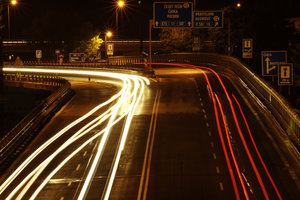We’ve talked about the risks that newly-licensed drivers have for car accidents in Boston and elsewhere. We’ve talked about their inexperience behind the wheel and some of their dangerous driving habits. Well, now we’re going to narrow that down even more and talk about some of the most dominant factors in teen accidents. A new study was released and determined sharp turns and screeching halts may be some of the best indicators into a teen’s risks for an accident. As a matter of fact, these driving habits were used to predict a teen’s chance of having an accident or a near accident after the study. Researchers always assumed that drivers who participate in risky behavior behind the wheel have a higher risk for an accident, but now there’s even more detailed data to show exactly why that’s the case, according to Reuters.

“A lot of us have ridden with drivers who drive in a jerky way and start too fast and then have to brake hard, and it makes us uncomfortable,” said Jean Shope, a researcher from the University of Michigan Transportation Research Institute.
Our Massachusetts car accident attorneys understand that this study looked at the habits of drivers and the effects that these habits had on their risks for an accident. In the study, researchers used cameras and computer equipment to measure the instances of higher gravitational force (or g-force) in the car with teen drivers. It’s important to point out that these devices aren’t present in the vehicles of all teen drivers, but parents can monitor the same kind of information just by riding along.
In the study, Bruce Simons-Morton with the Eunice Kennedy Shriver National Institute of Child Health and Human Development lead researchers. They looked at 42 newly-licensed drivers in the Virginia area through recording equipment to measure g-forces from quick turns and excessive braking and acceleration. These 42 teens were studied for a year and a half. These teens took nearly 70,000 driving trips during this time and recorded nearly 40 accidents and more than 240 near accidents.
Around these accidents and near accidents, the g-force rate appeared to increase.
Simons-Morton says they’re not concluding that these movements are the sole cause of the accidents but that the pattern they found with these driving techniques can be used to help predict an accident involving a young driver.
The devices used by researchers aren’t widely available to consumers, but similar products can be purchased for about $500 and a monthly operational fee. Researchers have not determined if having one of these devices present can have any positive affect on a teen’s driving habits or their risk for an accident.
Yes, teens are inexperienced behind the wheel and may not be able to fully comprehend the dangers of driving. However, talking with them about roadway dangers and riding along with them regularly can help to reduce these risks. Parents can serve as a personal g-force reader to monitor their teen’s driving habits.
Shope says that newly-licensed drivers should try to stay on familiar roads. He says their driving abilities are probably best in these areas. He also suggests that they drive during the daytime in ideal weather until they get more experience under their belt.
Jeffrey Glassman Injury Lawyers LLC is an experienced and dedicated team of personal injury and car accident lawyers. We offer free and confidential consultations to those who have been injured and those who have family members who have been injured in Massachusetts car accidents. Call (617) 777-7777 to speak to someone about your claim today.
Additional Resources:
Risky starts and stops predict teen crashes, by Genevra Pittman, Reuters
More Blog Entries:
Star Athlete Killed in New Bedford Car Accident, Boston Car Accident Lawyer Blog, February 17, 2012
MassDot Helps Parents Prevent Fatal Teen Car Accidents in Massachusetts, Boston Car Accident Lawyer Blog, February 13, 2012
 Boston Car Accident Lawyer Blog
Boston Car Accident Lawyer Blog

